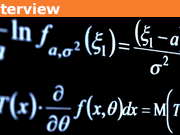Richard Feynman Quiz: Think You Know Richard Feynman?
Richard Feynman is one of the most popular and highly regarded physicists of all time. You think you may know him, but do you? Let’s find out by taking this quiz!
Table of Contents
Richard P. Feynman
Nobody ever figures out what life is all about, and it doesn’t matter. Explore the world. Nearly everything is really interesting if you go into it deeply enough.
Ready for your next quiz? How well do you know Stephen Hawking?
1. Who was Richard Feynman?
Richard Feynman was an American theoretical physicist renowned for his work in the path integral formulation of quantum mechanics, the theory of quantum electrodynamics, and the physics of superfluidity of supercooled liquid helium, as well as in particle physics for which he proposed the parton model. He was known for his distinctive teaching style and colorful personality.
2. What is Richard Feynman most famous for?
Feynman is most famous for his contributions to the development of quantum electrodynamics (QED). He introduced the Feynman diagrams, a graphical representation of the interactions of subatomic particles, which have become a fundamental tool in quantum physics. He shared the Nobel Prize in Physics in 1965 for his work in this field.
3. Did Richard Feynman contribute to the Manhattan Project?
Yes, Richard Feynman was a key member of the Manhattan Project, the U.S. government research project during World War II that produced the first atomic bombs. He worked at the Los Alamos National Laboratory, where he made significant contributions to the development of the bomb.
4. What are Feynman’s notable publications?
Feynman’s notable publications include “The Feynman Lectures on Physics,” a comprehensive textbook based on lectures he gave at Caltech. His other works include “QED: The Strange Theory of Light and Matter,” which introduces quantum electrodynamics to a general audience, and “Surely You’re Joking, Mr. Feynman!” a book of anecdotes from his life.
5. What was Richard Feynman’s teaching philosophy?
Feynman’s teaching philosophy was centered around making complex concepts accessible and engaging. He believed in the importance of understanding the fundamentals deeply rather than memorizing advanced topics. His teaching style was characterized by clarity, simplicity, and a bit of humor.
6. How did Richard Feynman impact the field of physics?
Feynman significantly impacted physics through his work in quantum mechanics and quantum electrodynamics. His approaches and methods, such as Feynman diagrams, have become standard tools in theoretical physics. His contributions have influenced many areas of physics and have helped in simplifying and solving complex quantum physics problems.
I have a BS in Information Sciences from UW-Milwaukee. I’ve helped manage Physics Forums for over 22 years. I enjoy learning and discussing new scientific developments. STEM communication and policy are big interests as well. Currently a Sr. SEO Specialist at Shopify and writer at importsem.com








Leave a Reply
Want to join the discussion?Feel free to contribute!